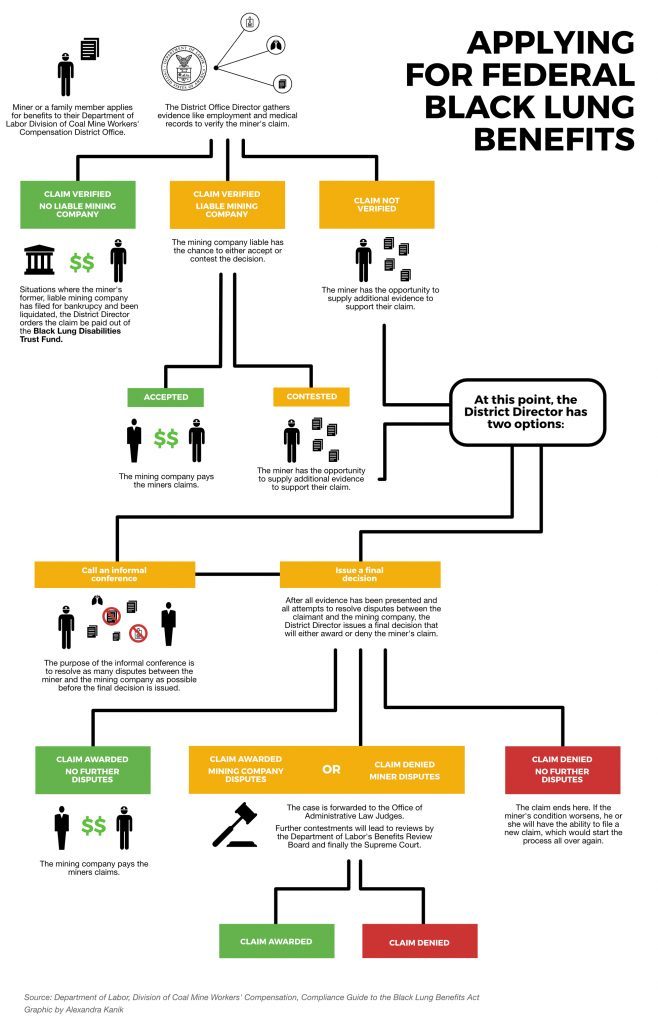News
Living With Black Lung: Coal Miners Caught In A Surging Epidemic
By: Benny Becker | Ohio Valley ReSource
Posted on:
The central Appalachian coalfields are in the middle of an unprecedented epidemic of severe black lung disease. In a recent issue of the Journal of the American Medical Association federal researchers released the results of a study conducted at just three black lung clinics. The study confirmed 416 cases of the most severe form of black lung disease, Progressive Massive Fibrosis.
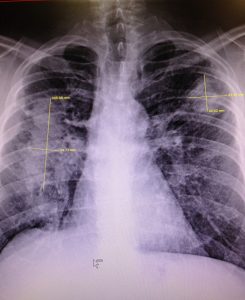
According to the authors, it’s the largest number of severe black lung cases ever documented, and one of the worst industrial epidemics in American history.
As startling as the findings are, the researchers said that their report is far from an accurate total count. The researchers first noted the epidemic at a fourth clinic in Pike County, Kentucky, where there are now around 100 confirmed cases. NPR’s investigations found nearly 2,000 cases across Kentucky, Virginia, and West Virginia.
The condition, caused by coal mine dust, is debilitating and often deadly. Tiny specks of coal and rock dust get lodged in the lungs and cause scarring, which prevents lung tissue from absorbing oxygen. It’s a progressive condition, meaning it gets worse over time. One of the most troubling details of the current epidemic is that the disease is developing more quickly than previously thought possible.
Some young miners have contracted severe black lung disease after just eight years working in mines. Experts think this may be due to miners working longer hours and inhaling an especially toxic silica dust produced from cutting sandstone. Most of the region’s thickest and most accessible coal seams were mined many decades ago and much of what is left requires cutting through sandstone and other rock layers.
In reporting on this epidemic, the ReSource and NPR have interviewed dozens of Appalachian miners who are struggling with severe black lung disease, including Jerry Helton and Edward Brown. Both men contracted severe black lung disease from working in mines around the same area, but they’ve been left in very different situations, due to differences in the benefits and medical care they’ve received. Their willingness to talk openly about their experience provides a window into what life is like for the many Appalachian miners still struggling with the disease.
Entering the Mines
In many ways Jerry Helton and Edward Brown are similar. Both entered the mines at the same age — 20 years old — and both worked mines in the same corner of Appalachian Virginia bordering Kentucky and West Virginia.
But our conversations quickly reveal the two had very different experiences, right from the start of their careers.
Helton, 65, has short-cropped grey hair, and is quick to show a jolly smile. He started at a large mine that went deep underground. He had the good fortune of being promoted to foreman after just five years.
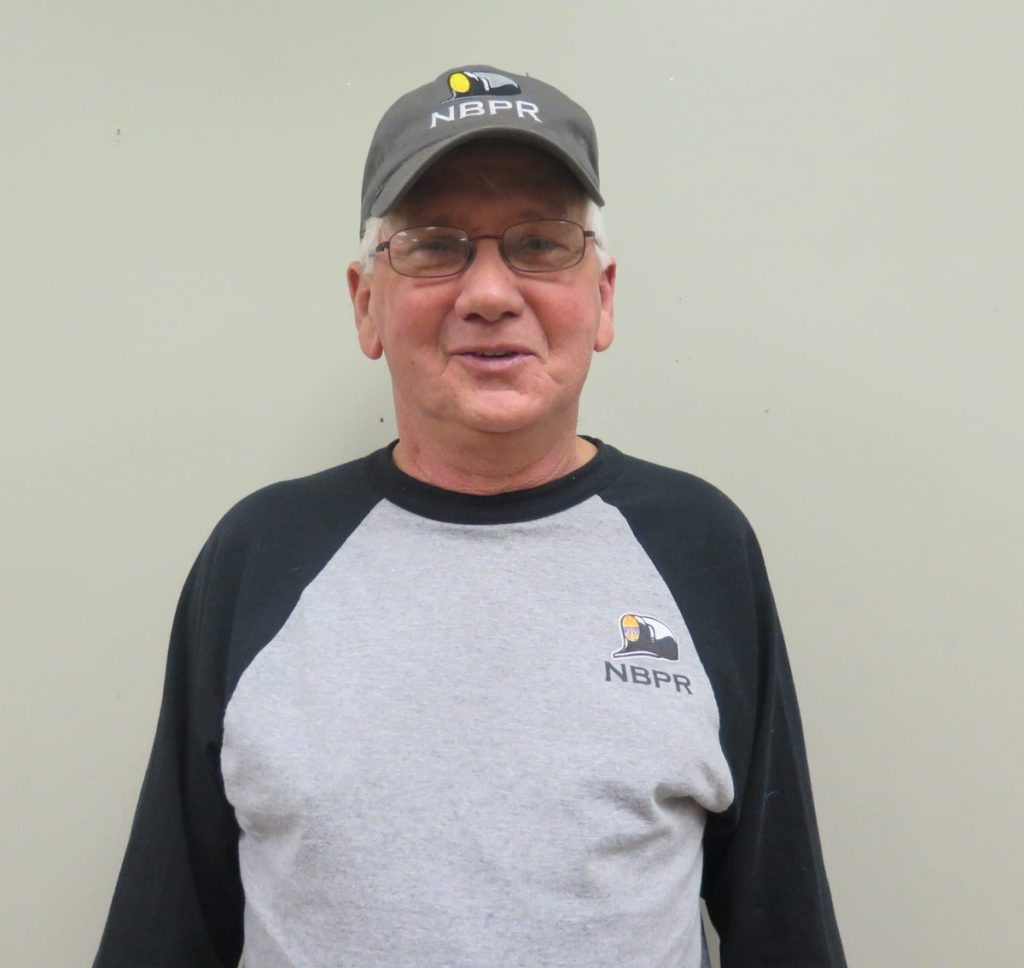
“I got my five year in, then when they hired me for a piece of equipment operator, the first night I was there, so I started bossing just as soon as I got underground that night.”
Brown, 55, has a neat, graying goatee and a habit of chuckling a bit after talking about his hardships. He had hoped to avoid mining but felt he had no choice.
“I couldn’t find a decent enough job to make a living in this area outside of the mines, so I went,” he said.
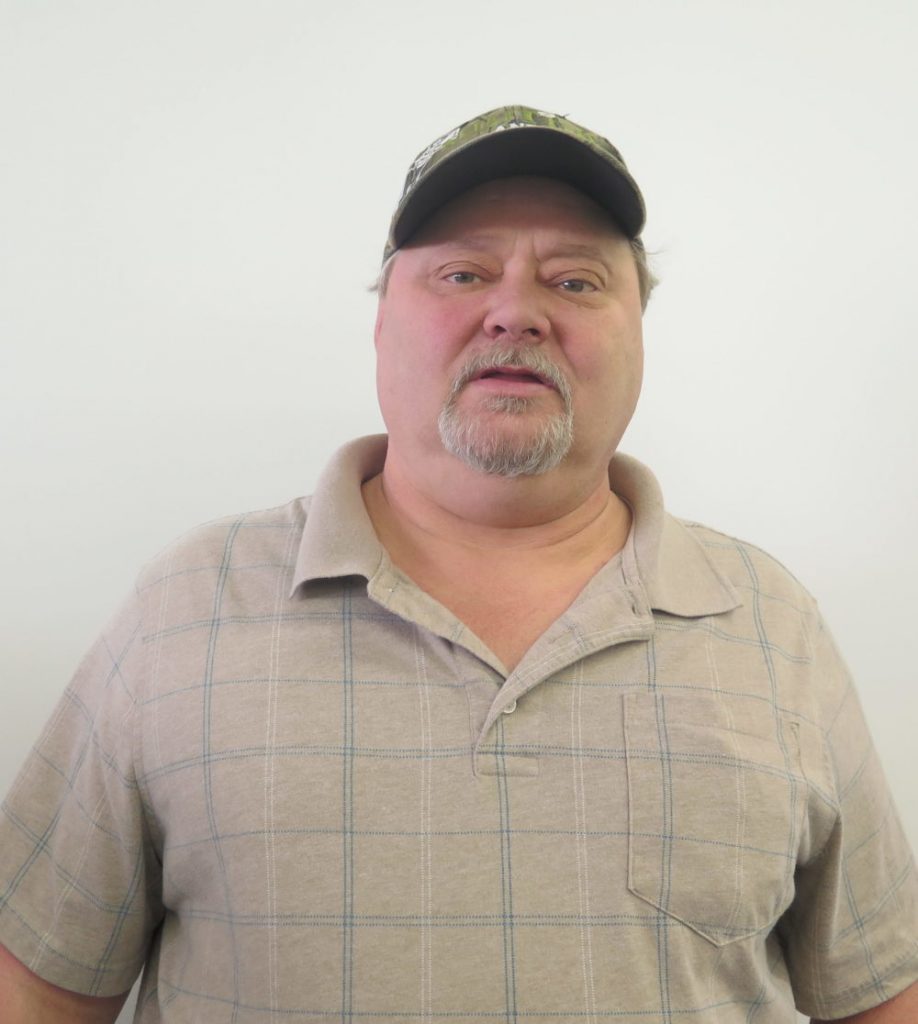
He started at a small union mine but it went nonunion within his first year, and pay cuts followed. Soon Brown was getting paid less than $10 an hour for his work as a roof bolter.
“I said, I could bag groceries for that much. But he had us on that good insurance, and the old lady about to have a baby, what do you do? You take that $9.56 and go on.”
Eating Dust
As a foreman, Helton said, he was constantly in and out of the dust as he checked on the workers he supervised. He said he didn’t feel that his company strayed from the rules controlling dust levels, and claimed that their practices did not change when inspectors came. He’s heard from doctors that some of the most damaging kinds of dust — the kind your body has the hardest time coughing out — are dust particles too small to see with the naked eye.
“We always had good ventilation, but whatever went through my nose and mouth, it stuck to me,” Helton said.
As a roof bolter, Brown spent a lot of time in the dust as well. The mines he worked in would often have just enough ventilation to allow the workers running the mining machinery to see what they were doing. Dust control for other workers like Brown, who mostly ran a roof bolting machine, was often more of an afterthought.
“They’re all dusty, I’m telling you,” he said. “You eat a lot of dust. It’d cough you to death sometimes.”
That included a lot of rock dust as well as coal dust He remembered his crew once cut through rock for a whole year. But when inspectors came, things changed — temporarily.
“Most times they’d shut down,” he said. “If they’d done everything strictly by the book they wouldn’t run a lump of coal.”
“Like a lump of coal”
For Helton, the symptoms came on pretty suddenly. In less than a month, he went from feeling normal to having a really hard time breathing.
“Labor Day weekend of 2010, that’s when I noticed my breathing was just a little bit different. Then about a couple weeks later, I got to where I couldn’t hardly breathe,” he said. “The doctors say my lungs started shutting down, they said they were hardened just like a lump of coal.”
The doctor told him he had to stop working.
—–Listen—–
Brown was out of a job before he realized he had black lung. The company he was working for laid off all of its workers in 2003. He went to a doctor soon after he was laid off, but there were other, more pressing issues to work through first. He had back and hip injuries that Brown says were caused by two times he had rocks fall on him while he was underground.
“Then it was one medical bill after another,” he said. “I sold my truck, sold my trailer.”
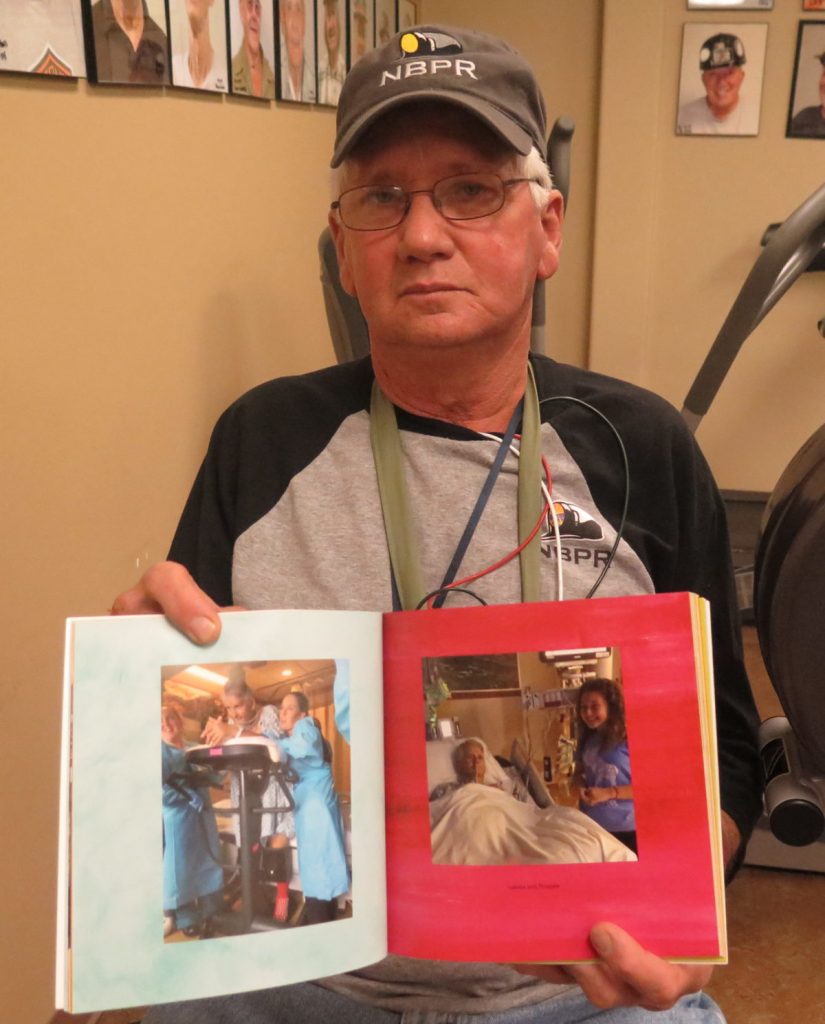
Only after two hip replacements did Brown start to focus on his breathing issues, which he thought at the time could have been caused the weight he’d gained since becoming disabled.
“My family doctor kept telling me, ‘Your lungs are in bad shape, your lungs are in bad shape.’”
It was almost five years after he stopped working that Brown finally got an X-ray and learned that the problem was in his lungs.
Seeking Benefits
The process of getting benefits was relatively easy for Helton. Although he did have to fight his former employer in court for three years before getting a final ruling, he was also able to draw disability benefits just six months after the doctor told him he had to stop working.
“It was sort of upsetting you know,” he said. “As long as you’re on the job, you’re okay. But when you get disabled to work, you’re just another number.”
Brown said it took more than six years for him to get his Social Security disability benefits. In the meantime, he’d racked up tens of thousands of dollars in medical debt that he still owes.
Brown decided to follow through on a family-member’s advice to apply for benefits through Virginia’s state system. Virginia, like Kentucky, gives coal miners just a few years after they finish working to apply for these benefits, and by this point, Brown’s had time had nearly run out.
His doctor said that Brown had the condition, but he wasn’t awarded the benefits, and by the time he got the decision, there was no time left to appeal.
—–Listen—–
“Somebody said, ‘You ought to file,’” he said. “But they give you the runaround, man.”
Several years later, one of Brown’s doctors suggested he go to a lung specialist and apply for federal benefits, an option Brown hadn’t realized that he still had. He’s now working on that process, and hopes to start receiving benefits soon.
Brown’s black lung diagnosis is among those confirmed in the recent JAMA study.
“I can breathe.”
Thanks to his benefits, Jerry Helton has had access to some of the best treatment available. In addition to specialized rehabilitation classes for miners with black lung disease, Helton was able to get a double lung transplant, a procedure that can cost well over a million dollars.
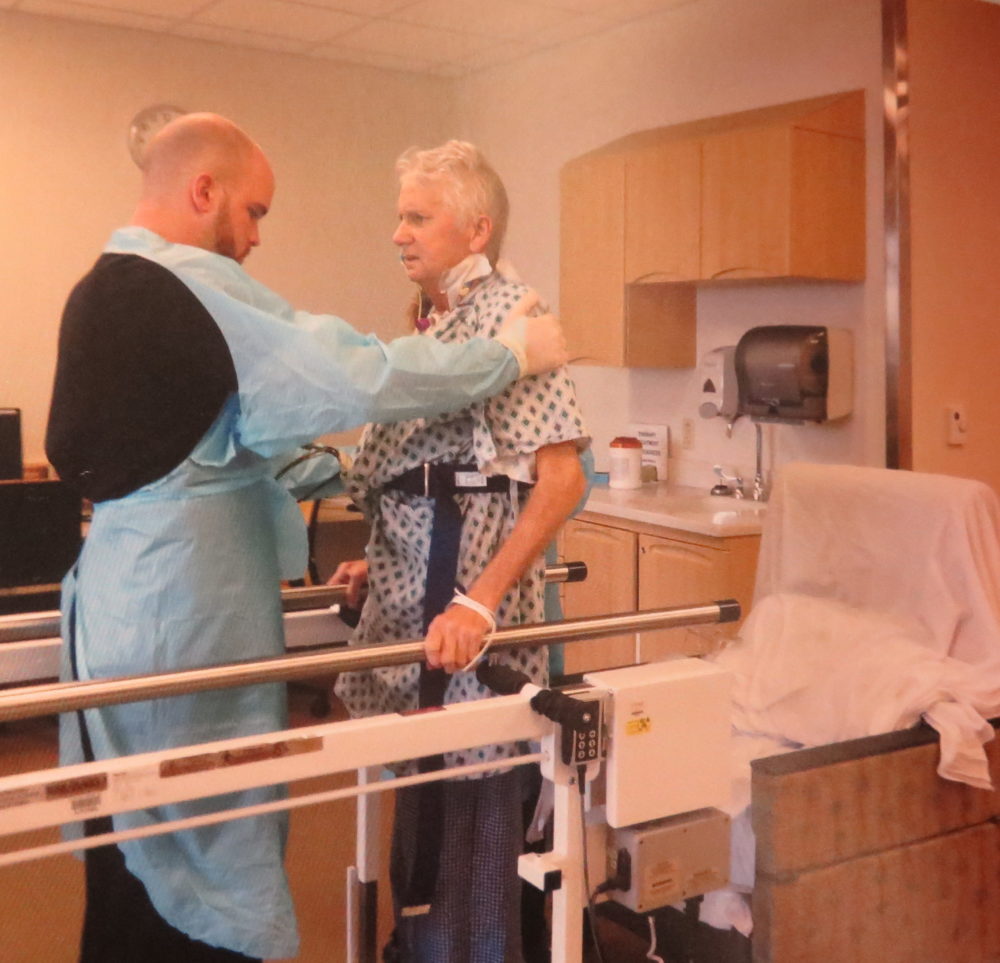
“The doctors, they sort of laugh and joke and said they wanted to check me out and see if I was worthy of spending $3 million on,” he said.
Blood loss during the procedure put Helton into a coma for three weeks. He lost muscle function to the point he couldn’t even lift his head. His kidneys shut down during the coma so he’s been relying on dialysis treatments, but he’s looking forward to a kidney transplant. It’s an ongoing process to regain control of his body, but Helton is now up and walking. And most importantly, he now has lungs that work.
“My breathing is wonderful,” he said. “It’s great. I can breathe.”
—–Listen—–
“I can’t pay.”
Edward Brown is still deep in debt from medical treatments he received before he was approved for Social Security disability, which is now his only income. He uses a couple of kinds of inhalers, but when his doctor recommended he go on oxygen, he had to take a hard look at the cost.
“I can’t pay for it!” he said. “If I don’t get black lung and let them help me pay for it, I can’t afford it.”
Second Chance
Helton still has health challenges but he feels he is returning to normal.
“I’m just about back to 100 percent, you know,” he said.
He has a farm where he’s been keeping sheep, and he’s looking to expand and get into raising cattle. His therapy is helping him walk more normally and he’s even back in his preferred footwear.
“When I left the hospital, I couldn’t get my boots on. I wore tennis shoes and I hated them,” he said. “I’m a boot man!”
Helton’s boots gently thud as walks, the sound of a minor miracle. Helton is also deeply grateful for the donor whose lungs have allowed him to breathe again.
“Everybody needs to be a donor,” he said. “Give somebody else a second chance at life. If somebody hadn’t given me a second chance, I wouldn’t be here.”
“It’s coming.”
Brown is still waiting for his second chance. As he deals with medical issues and bills his breathing keeps getting worse. Not long ago, he would roam the hillsides with friends to hunt and fish. Now, just carrying groceries across the lawn and up three steps is a challenge.
“Yeah I’d like to get better, it’s all I’ve got to look forward to is get worse and worse, you know,” he said, and followed it with the low chuckle he often adds to some of his darker thoughts. “You can’t do nothing man, sit at the house and worry about how you’re going to pay the next daggone bill.”
Brown said he sees in some of his friends that the weight of losing income is taking a mental toll.
“I’m hearing a lot of these guys wanting to commit suicide because they’re letting their family down, you know,” he said. He feels it, too.
“It weighs on a lot of people’s minds. And it weighed on mine so long I’m an alcoholic now. I get some of this stuff on my mind and can’t get it off of my mind unless I drink. The doctor down there is trying to help me but, I don’t know.” His voice trails off. There is no dark chuckle now, just a long pause and a distant stare.
“No one looks forward to dying. But it’s coming, and that worries me.
“Oh, Lordy.”
—–Listen—–
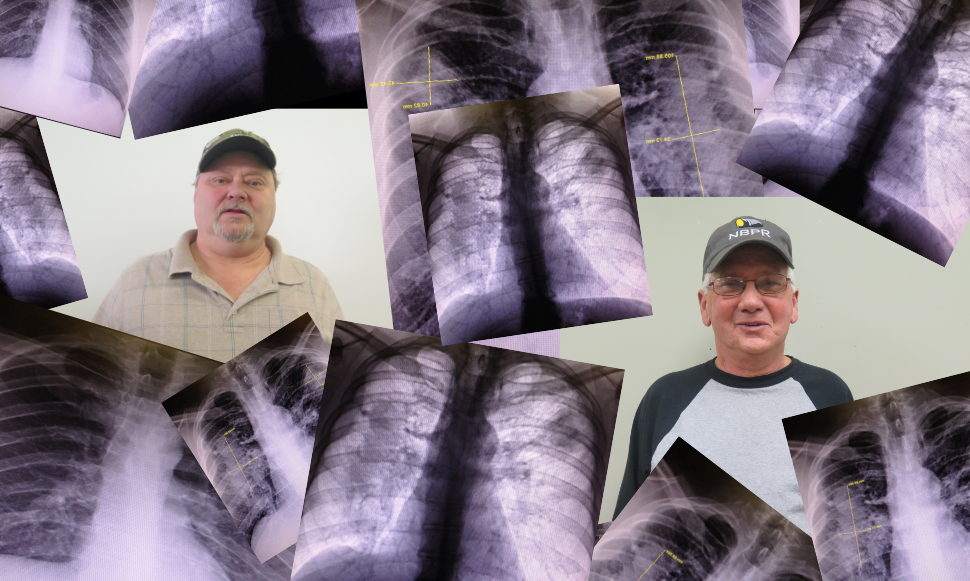
The Next Generation
Jerry Helton and Edward Brown have one other thing in common: They are both fathers. Both think about their sons following them into the mines.
Helton said his son works as a truck driver and has worked around the coal industry but not in the mines. If his son or anyone else wanted to go to work underground, he said he would support that decision.
“In this area that’s really the only thing that pays anything,” he said. “I’d just give them a few pointers to try to stay out of the dust as much as possible, and you know, wear that mask.”
Edward Brown’s son found work as a security guard for a coal property but he’s worried that his son is going to be drawn underground for the same reasons he was, to support his family.
“I said, ‘Son, don’t ever go in the coal mines if you can make it out here. I try to help him every time I can though, to keep him out of there.”
This story was produced in partnership with an NPR investigation.
If you or someone you know is thinking about suicide or would like emotional support, you can reach the national suicide prevention lifeline at 1-800-273-8255.


